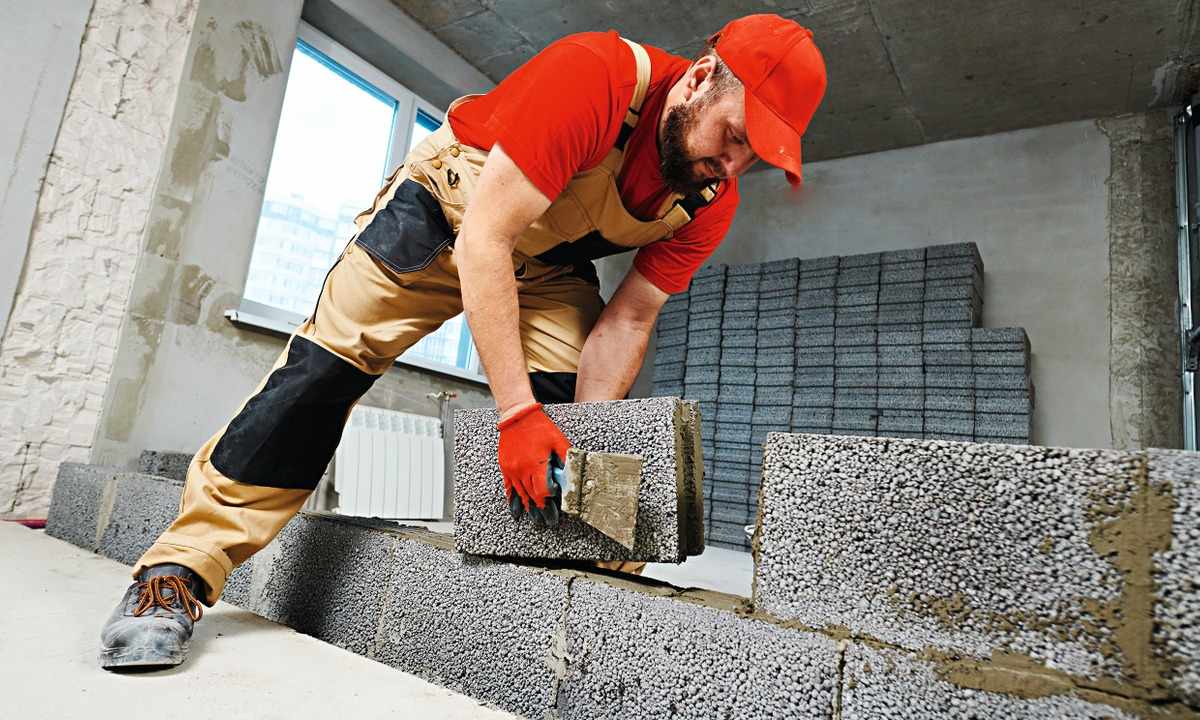Already several thousands years ago at construction of large-scale building constructions devices on which it would be convenient to work at height were required. Ancient Egyptians suited high embankments around constructions, but it was labor-consuming and not too practical. Subsequently there was bricklayer's scaffold which is everywhere used at construction of multy-storey buildings also today.
Wooden bricklayer's scaffold
Bricklayer's scaffold of different design is widely applied at construction of buildings and restoration works at height. Before the wood were rather shaky and fragile therefore work at height has been accompanied by risk for life. Modern technologies allow to make the woods of more reliable design. And specially developed rules of work on such constructions minimize risk of falling and getting injured.
The most widespread material for production of the woods – wood from which such design has also received the name. From strong and quality wood very often mount so-called self-made scaffolding on which it is possible to work at rather small height, for example, at construction of owner-occupied dwelling. The horizontal flooring is formed of thick boards, to it reliable support fasten.
The sizes of the simple wooden woods are chosen so that the worker could stand steadily on flooring, at the same time foot should not come for edges of design.
Props fasten to the basic basic elements at an acute angle, at the same time their lower part becomes sharpened and reliably is fixed in soil. The vertical party of support is beaten to building wall by nails which do not hammer up to the end, it is so simpler to sort design upon completion of works. After assembly of the woods it is necessary to make sure of reliability of connections and durability of all design. It is not recommended to carry out the wooden woods more than seven meters high.
Metal woods
More rugged and thorough constructions of the woods make of aluminum or steel pipes. Mounting of such woods is made in the industrial way. Usually distinguish the metal woods of modular and frame structure. From the frame woods the greatest distribution was received by the pin, and from modular – clamp and wedge designs. Each type of the forests by all means demands fastening to wall by means of anchors. Besides, the site under the woods has to be equal and stamped.
As a rule, at the device of the metal woods arrange branch from site of rain waters.
The popularity of the frame woods is explained by the low price and ease of assembly. For installation of design the elements of construction bring to the corresponding openings and reliably fix turn of fastening element. Each higher frame is entered into the slot of the lower part of the woods, additional fixing at the same time is not required. Height of assembly of the frame woods can reach several dozen meters. It is important to think over in advance as tiers with ladders will be located and precisely to calculate quantity of the frames which are required for specific construction. Other type of the metal woods – the pin designs. It is also very simple to bring together them. The difference of the pin woods is that their horizontal elements fix, entering pins into hollow tubes. For giving to the woods of bigger rigidity use drag struts which mount on diagonal. The pin woods widely apply during the masonry works, is more rare – when finishing buildings. Combining the pin and clamp woods, it is possible to construct difficult schemes with reliable and universal framework. The cost of the pin woods is slightly higher, than frame. The wedge woods are more difficult arranged. Elements of such framework fix by steel wedges which are required to be driven and beaten out the hammer. The wedge woods therefore are more reliable and capable to maintain much higher loadings if to compare them to the pin or frame. The form of wedges is chosen so that to prevent spontaneous wedging. This type of the woods is applied not only at construction of houses, but also in shipbuilding. The so-called clamp woods give opportunity to build practically any space designs, including domes or difficult ledges. Such woods it is incomparable more difficult on design and demand more thorough assembly. But these difficulties pay off opportunities of application of this type of the woods, they allow to cope with problem of dead zones when other types of the woods cannot be applied.
What type of the woods to choose
Choosing bricklayer's scaffold, it is necessary to proceed from the purposes of their application. For this purpose it is necessary to consider urgency and volume of the planned works and also availability or lack of site for placement of design. The unpretentious and cheap frame woods will be suitable for laying and finishing at rather small height. For higher constructions it is necessary to use more reliable pin and clamp designs which have bigger loading capacity. And here the difficult geometry of the building practically does not leave the choice, forcing to use the clamp woods.
If you plan works for long term, try to choose the woods having the galvanized collars resistant to impact of corrosion.
That construction of the woods did not become too expensive action, try to calculate the need for elements in advance. Make the scheme of mounting, having provided reliable fastening assemblies, having planned locations of transitional ladders and safety sides. Good results can be received, combining the woods of different types. It will allow to get access to the most difficult surfaces of the building.
